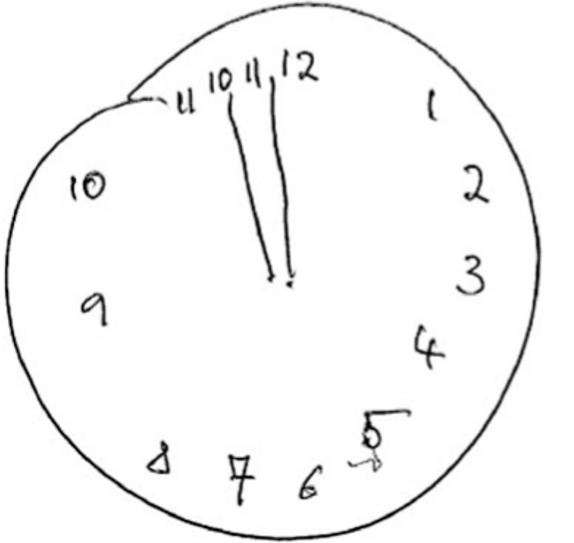The clock drawing test is a quick and easy test to use to screen for impairments in cognitive functions such as praxis , attention, language, orientation in time and space, and executive functions.
Despite its simplicity, it is very sensitive, that is to say it can reliably detect this type of disorder.
What does the clock test consist of?
The examiner presents the subject with a sheet on which a circle of about 10 cm is drawn (the examiner can also ask the subject to draw the dial himself). Then he said to her:
“This circle represents the face of a clock (or a watch). Please place numbers in this circle so that it looks like a clock face. Then draw me hands showing the time of 11:10 ”(this time is particularly useful for subtly detecting a cognitive deficit, in particular a visual field disorder).
How to interpret the results?
The examiner checks the following four criteria:
- The location of the numbers corresponding to each hour.
- Scheduling of hours.
- The correct representation of the two needles (small and large).
- The location of the two hands corresponding to the requested time.
If the subject passes the clock test, the likelihood of having dementia is very low.
However, one or more errors indicate the presence of cognitive impairment or dementia . An additional test (in this case the MMSE test ) is necessary to undertake a more detailed assessment of cognitive functions.
Here is an example of drawing made by elderly subjects with dementai for example during the clock drawing test.

